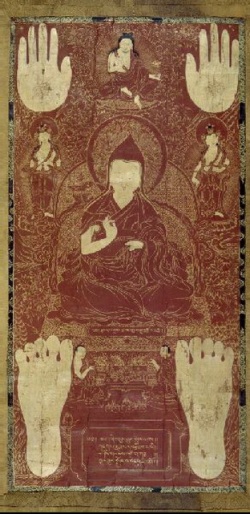Golden Urn
The Golden Urn refers to a method introduced since the 18th century to select Tibetan lamas. In Tibet, on several occasions, children believed to be the reincarnations of the Dalai Lama or the Panchen Lama have been identified by a lottery method, in which names of competing candidates are written on folded slips of paper placed in a golden urn (thus having the name).
This method originated in a decree issued by the Chinese emperor Qianlong in 1792, and was used in the selection of the 10th, 11th, and 12th Dalai Lamas. After defeating the Gurkha invasion in 1792, Emperor Qianlong issued The 29-Article Royal Decree for Better Governing in Tibet, in which Article One ordered the new protocol for deciding the reincarnations of the Dalai Lama and the Panchen Lama.
The names and dates of birth of each candidate were to be written in the Manchu, Han, and Tibetan languages on metal slips and placed in the golden urn. After prayers before the statue of the Buddha in the Jokhang temple in Lhasa, a slip was drawn, the Buddha ensuring that the correct slip was selected.
There are two Golden Urns issued by Qianlong. One is enshrined in Jokhang Temple in Lhasa for choosing Dalai and Panchen Lama reincarnations, the other is in Yonghe Temple, or Lama Temple, in Beijing for choosing Mongolian Khutughtu reincarnations. The 7th Panchen Lama, Palden Tenpai Nyima, used the Golden Urn for the first time in 1822 to choose the 10th Dalai Lama, Tsultrim Gyatso.
Most recently, in November 1995 the Golden Urn was controversially used to name Qoigyijabu (Gyancain Norbu) as the 11th Panchen Lama. This action was approved by the PRC government, but opposed by the Government of Tibet in Exile. In May of the same year, the 14th Dalai Lama, Tenzin Gyatso had named Gedhun Choekyi Nyima as the 11th Panchen Lama.
